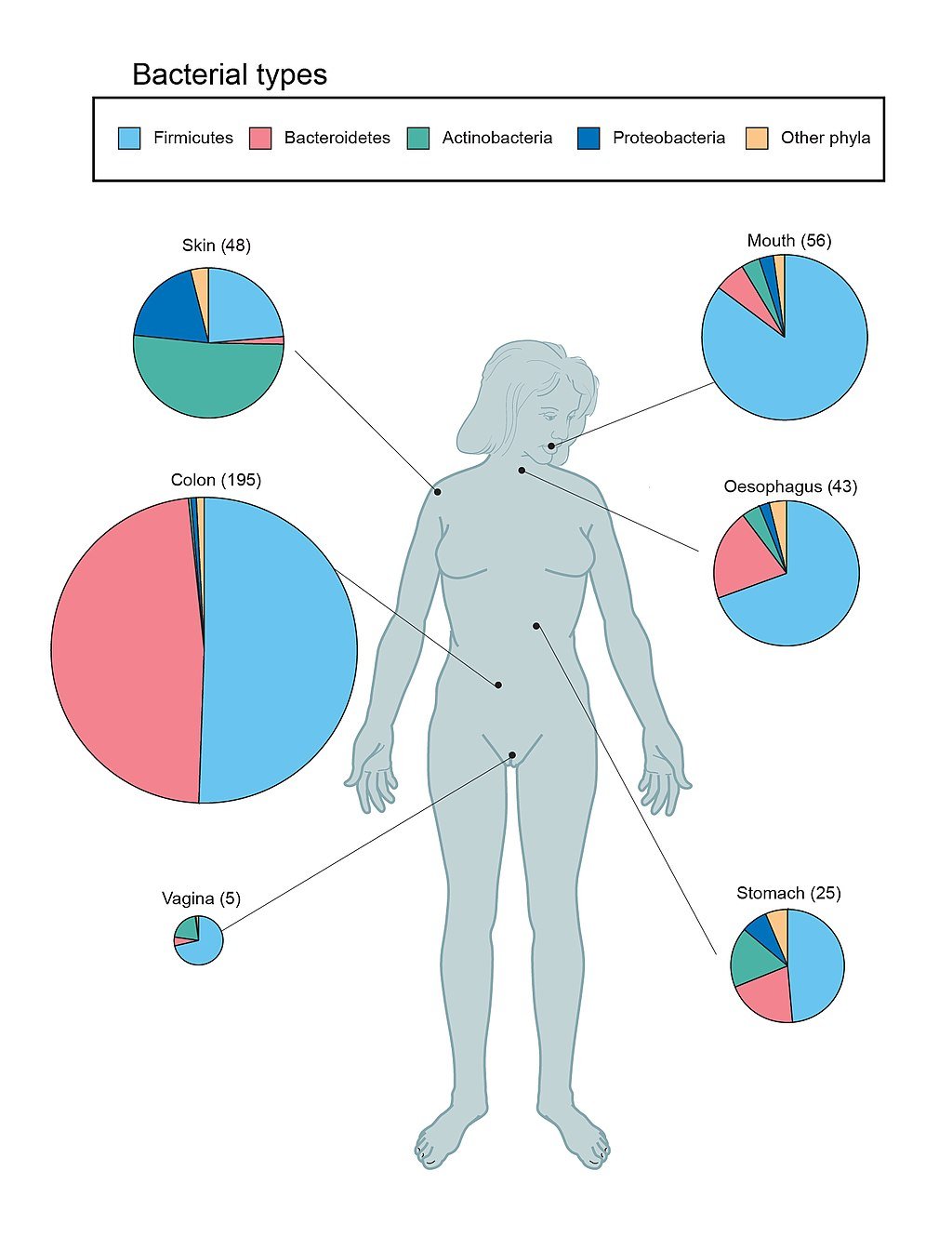https://commons.wikimedia.org/wiki/File:Holobiont_representation.png, Helen Spence-Jones, CC BY-SA 4.0 <https://creativecommons.org/licenses/by-sa/4.0>, via Wikimedia Commo
Deborah Tosline wrote and published “Skin Remodeling DIY: An Introduction to the Underground World of Do-It-Yourself Skincare” in 2015. Her approach to skin care is based on a scientific background, love of research and over 30 years of DIY skincare experience.
When I think of the human skin microbiome, I am reminded of how important the human gut biome is for personal health. Further, the Earth’s biomes are fundamental to sustaining life as we know it. A biome is a community of organisms that naturally occur in the same general area. Millions of beneficial bacteria, fungi and viruses colonize to create the microbiota that protect and nourish our skin.
Skin is our largest organ and home to our microbiota. A healthy biome provides a barrier which acts as a first line of defense against pathogenic microbes, enhances our immune system and produces beneficial molecules that nourish skin cells. When skin is dry, undernourished, and unbalanced the micro-biotic barrier may become disturbed and susceptible to foreign pathogens.
A healthy skin biota with balanced thriving skin flora protects the skin from bad bacteria and mitigates inflammation associated with flushing, premature aging, acne and rosacea.
Certain skin microbiota prefer to live in specific locations on the body for example eczema prefers to live inside the elbow and psoriasis occurs on the outside of the elbow.
https://commons.wikimedia.org/wiki/File:Microbiome_Sites_(27058471125).jpg, National Human Genome Research Institute (NHGRI) from Bethesda, MD, USA, CC BY 2.0 <https://creativecommons.org/licenses/by/2.0>, via Wikimedia Commons
Considering the huge number of biota that exist and their vast array of environments, its complicated to study biomes. The skin microbiome is comprised of a complex combination of microorganisms. There is limited research available regarding the skin biome. There are three types of biotics: pre-, pro-, and postbiotics.
Prebiotics
Prebiotics provide food for existing microbiota. They nourish the skin flora and help to balance the microbiome and maintain healthy skin. Prebiotics include plant-based sugar molecules and healthy oils which help the microbiome digest fiber. Natural prebiotics include:
Oat
Rice
Flaxseed
Soy
Glucomannan
Ginseng
Probiotics
Probiotics are live cultures that introduce specific living strains to augment the existing skin flora. Probiotics consist of beneficial living organisms that can strengthen skin immunity. Probiotics may balance and improve the skin's microbiome which can help to reduce inflammation.
Probiotics may improve skin conditions such as atopic dermatitis, visible signs of aging, wound healing, acne and psoriasis. Until we better understand the natural skin microbiome, it is difficult to identify probiotics that may be used to treat specific skin conditions.
Although retail products may list microbes as an ingredient, living bacteria may be inactivated due to the preservatives in a product.
https://commons.wikimedia.org/wiki/File:Dysbiosis.jpg, Suhelen Egan & Melissa Gardiner, CC BY-SA 4.0 <https://creativecommons.org/licenses/by-sa/4.0>, via Wikimedia Commons
Retail skin care products contain many ingredients that are harmful to the skin’s biomes including:
harmful chemicals
exfoliants
fragrances
Common probiotics include:
Lactococcus
Bifidobacterium
Streptococcus thermophilus
Saccharomyces
Lactobacillus
Leuconostoc
Postbiotics
Postbiotics are the outputs that result from the metabolic interaction between probiotics and the skin and its microbiota. These beneficial waste products include:
Enzymes
Peptides
Peptidoglycan-derived muropeptides
Polysaccharides
Cell surface proteins
Organic acids
The concept of postbiotics in skin care is that you can apply biotic waste products directly to the skin without the use of pre- and probiotics.
Postbiotics include:
Nutrients such as B vitamins, vitamin K, and some amino acids
Short-chain fatty acids
Bacteriocins like antimicrobial peptides
Carbohydrates
Hydrogen Peroxide
https://commons.wikimedia.org/wiki/File:Human_microbiome_NHGRI.jpg, en:National Human Genome Research Institute, Public domain, via Wikimedia Commons
Although there is limited knowledge about the skin microbiome, it is evident that a healthy microbiome is vital for healthy skin. A 2019 study showed that diseased skin has a different skin microbiome than healthy skin and a 2021 study found that unhealthy skin conditions are worsened by an unhealthy microbiome.
My first facials were DIY and nature based. While I attended college, on Saturdays I would apply plain yogurt (probiotic) as a facial for about an hour while I cleaned and studied. Subsequently, I would apply smashed avocado (prebiotic) for an hour and after that honey (prebiotic) for another hour. At the time, I did not know that these masks supported my skin microbiome, but I did know that these kitchen masks felt right and I continued.
The active cultures in plain yogurt provide probiotics for the skin microbiome. In addition, yogurt contains zinc, lactic acid and beneficial fats that promote skin health. For a probiotic boost, add a probiotic capsule to your yogurt face mask.
Contemporary retail products and mainstream cultural living may not support our biomes and can create uninhabitable environments for our skin flora if we neutralize them into oblivion.
A DIY nature-based skin care program can support a healthy skin microbiome. Health = Beauty. Provide a nutritional smorgasbord for your skin flora by applying natural pre- and probiotic ingredients to skin. Add advanced DIY skin care ingredients to augment the natural post-biotic activity for a biotic trifecta to promote beautiful skin.
If you need more information, check out the local library, search the Internet, or check out my past articles. Of course, it would be an honor to me if you purchased my facial care book. Thank you!
Take good care of yourselves!
XO Deborah
This article is intended to be used as general information only and is in no way intended to replace medical advice, be used as a medical treatment program, diagnosis, or cure of any disease or medical condition. There are no warranties, expressed or implied, regarding the effectiveness of the practices described in this article. Products or substances discussed herein are for educational purposes only and are not intended as recommendations of the author.



